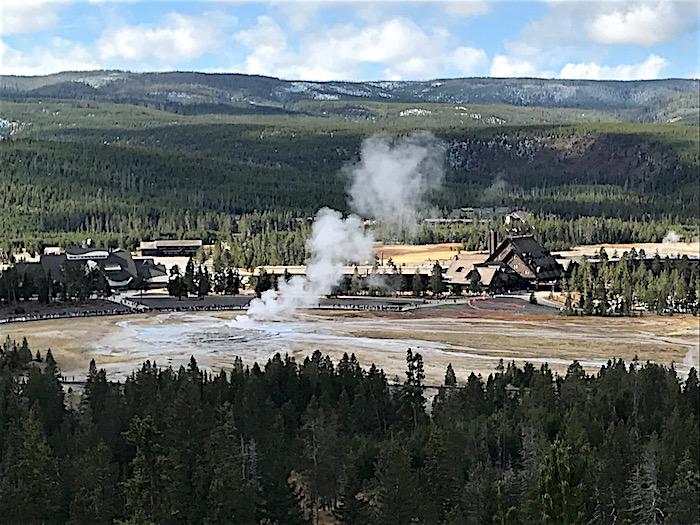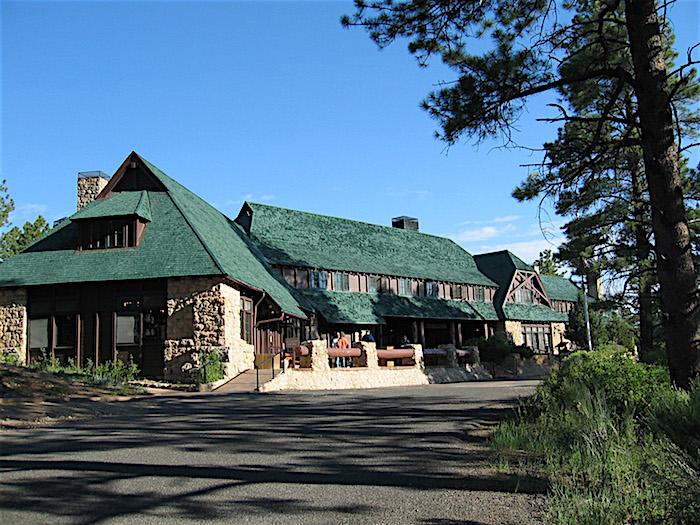
The Old Faithful Inn (right side) is part of a larger complex of lodgings in Yellowstone National Park/Kurt Repanshek
With more than a few national parks straining to cope with heavy visitation, and some groups hoping to see more lodging made available in some parks, it might seem odd to know that once upon a time the National Park Service considered itself the "parent of the concept of eliminating overnight accommodations (except campgrounds) inside the parks to minimize intrusions and lessen impact."
History can be a wonderful thing; it can show us where we once were at a particular time, help us understand where we are today, and be used as a baseline to see whether we've diverged from the path those in the past set us on. In the case of infrastructure in the National Park System, Ron Lee, a special assistant to then-Park Service Director George Hartzog, in 1967 provided a "lay of the land" when it came to lodging in Public Use of the National Park System, a look at where the agency was in 1872 when Yellowstone National Park was established and where he thought the agency would be in 2000.
In a foreward to the 98-page publication, Director Hartzog called it a "thought-provoking contribution to the continuing discussion of the functions and policies of the Service, particularly as they relate to our most basic responsibility--providing the public, for all time, with park benefits of the highest order."
On the topic of in-park lodging, Mr. Lee was of the opinion that less was better than more, at least when it came to brick-plank-stone-and-log structures.
"The National Park Service is parent of the concept of eliminating overnight accommodations (except campgrounds) inside the parks to minimize intrusions and lessen impact," wrote Mr. Lee in a statement that almost seems blasphemous when you consider the magnificent Old Faithful Inn and elegant Lake Hotel in Yellowstone that long preceded him. And not to be overlooked are The Ahwahnee Hotel in Yosemite National Park, the El Tovar in Grand Canyon National Park, and the many lodges that led to the "parkitecture" influence.

The Bryce Canyon Lodge reflects the "parkitecture" phase of lodge construction in the National Park System/NPS
Nevertheless, Mr. Lee noted that the task of eliminating overnight lodging inside parks, a focus intended to help alleviate overcrowding in the parks, "led into regional planning. Lately, this idea has been taken up by others who now claim it as a new concept. The principle of eliminating overnight accommodations was first applied over thirty-seven years ago in plans for the Great Smoky Mountains National Park. Except for Le Conte Lodge, no overnight accommodations, except campgrounds, have been permitted in the park since it was established in 1930," he wrote.
"This same idea was subsequently adopted for Acadia National Park, Cape Hatteras, and Cape Cod, among other places."
Some purists were of the opinion that the Park Servie should go further, and even eliminate campgrounds.
"Or to put it perhaps more accurately, they would at the very least stabilize the number of campsites inside the national parks at present levels and locate new campgrounds and campsites outside," Mr. Lee wrote. "This proposal apparently has two purposes. One purpose is to spare the national parks the physical intrusion of additional campgrounds. The second purpose, which may be more accurately characterized as a hope, is to divert potential national park users to surrounding areas of pleasing natural environment and thus reduce the visitor load on the national parks.
"Limiting national park travel to day-users represents a major sacrifice of quality in national park experience. And even if one reluctantly agrees to prohibit such types of overnight accommodation as lodges and cabins, the idea of also prohibiting additional campgrounds in these millions of acres set aside as 'park and pleasuring grounds' strikes one as requiring very substantial justification," he went on. "No American outdoor experience is more deeply rooted than camping or more valued as a link to the American past. To camp in a national park is doubly meaningful to many people.
"It is difficult to believe that preservation problems have become so serious that additional camping in carefully selected locations must now be ruled out as not a legitimate use of a large national park."



Comments
The full text of Public Use of the National Park System can be viewed at: http://npshistory.com/publications/public-use.pdf